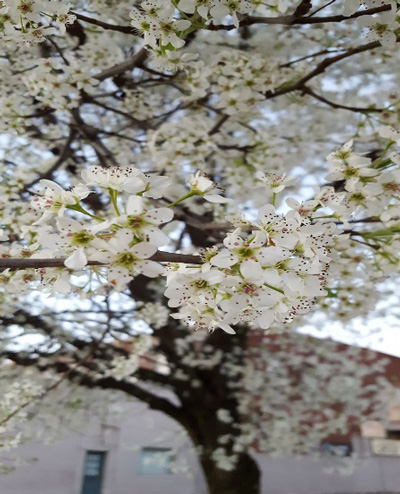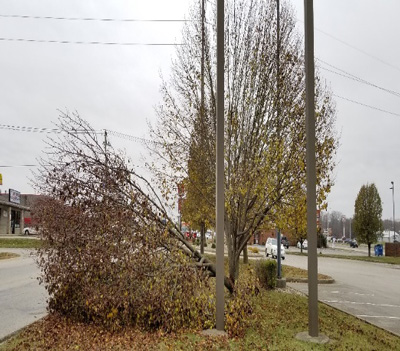Callery pear, also known as flowering pear or Bradford pear, is among the most popular ornamental trees in the United States. The white flowers produced by the tree is one of the first signs of spring in the Midwest. Callery pear is a common feature of plantings, urban trees and housing additions.

Photo provided
Unfortunately, the species is an aggressive invader of native forest, savanna and prairie habitats across the eastern United States. Expansion of Callery pear is a serious problem as the species outcompetes and suppresses native species that are much more desirable for wildlife habitat and forest health. In the coming weeks, you’ll see the white blooms of pear trees in front of homes, businesses and churches but also along roadsides and spread through other natural areas.
Callery pear can be easily identified by its charismatic white flowers that appear in March/April as one of the first plants to bloom. It also has distinct waxy, egg-shaped leaves and some varieties, especially where escaped, have large thorns. The fruits of the tree are small, typically the size of a dime or smaller with rough, brown skin. When first produced in spring, the fruits are quite hard but they soften over the course of the spring and summer, typically being consumed by a variety of birds and small mammals in late summer and fall.
Callery pear trees grow very quickly and produce pollen and fruit as early as three years. The abundant fruits are quickly dispersed by birds, including European Starlings and American Robins. This results in new Callery pear trees growing in a variety of habitats where birds travel and roost including forest, fields and under powerlines. Their continued use as an ornamental tree further contributes to the problem of expansion. In addition to their negative impacts on forests and wildlife, Callery pears are not a good choice for landscaping. Their tight branch angles and overall poor structure means they readily break under windy and icy conditions. This presents a danger to people and nearby structures where they are planted.

Photo provided
Controlling this invasive species can be a challenge. Callery pear has a deep, strong taproot that limits pulling even small stems. Additionally, it actively stump sprouts meaning when cut or girdled, follow up herbicide treatment is necessary to kill an individual plant. Finally, the general form of most stems is rather spindly with leaves close to the stem (and each other). This means spray herbicide application has limited success. As is the case with many invasive species, successive mechanical and/or herbicide treatments are most successful in effectively controlling and eradicating this species.
Contributing to the challenge of eradicating the species is the fact that the trees are actively available for retail and wholesale purchase by developers and consumers. Eliminating existing landscape and invading specimens is important, but consumers should also avoid purchasing and planting ornamental pear trees. For a list of retailers who sell native plants and do not sell invasive species, visit GrowIndianaNatives.org.
This message is brought to you by the Hamilton County Soil and Water Conservation District (SWCD). The SWCD is currently forming a collaborative effort to address invasive species in Hamilton County. For more information or to get involved, click here or contact Claire Lane, SWCD Urban Conservationist at claire.lane@hamiltoncounty.in.gov or 317-773-2181. Marion, Johnson, Boone, and Hendricks county residents can contact their local SWCD for more information on ongoing invasive species efforts as well.
